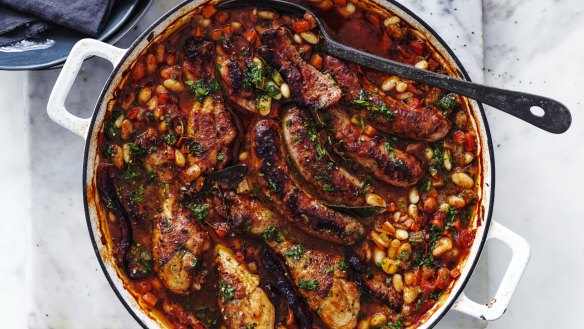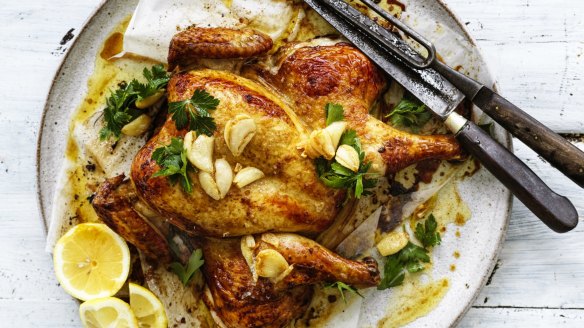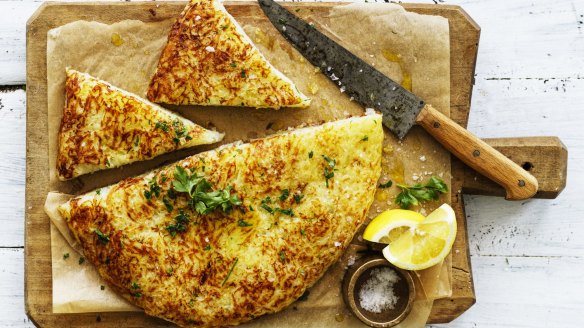Hidden extras: How to make Adam Liaw's most loved winter recipes even better

Recipes have a lot to say. An awful lot more than there's room for in functional list of ingredients and method. In the proper context, a recipe can teach you a lot about culture, history and most importantly, good cooking.
Related Article
But sadly, most of the information that comes with a recipe is often very, very bad.
There are fabulous food blogs out there who do a great job of adding context to their recipes, but many others will preface every recipe with five paragraphs of repetitive dreck designed not to inform, but just to game search engines into ranking the page higher.
You see, the more paragraphs that reference the name of the recipe before a list of ingredients, the more relevant the search engine will think the page is.
It's a pity, too, because that space could be better used to provide a useful understanding of a dish and its ingredients. Here's a bit of a deeper dive into three of my favourite winter recipes.
Chicken and sausage cassoulet
The first time I tried cassoulet the rain was falling lightly upon the cobblestones outside a little French bistro in Paris' 11th arrondissement… just kidding. You don't need a retelling of old holiday stories to learn how a dish works.
Cassoulet is braised beans and meats. Originally coming from the Languedoc means those meats are usually duck confit, Toulouse sausage and slabs of cured pork belly, and it's often topped with a breadcrumb crust.
Simplifying that into a more family friendly recipe means I've opted instead for chicken drumsticks, pork sausages and thick-cut bacon. Buy blocks of speck for this, as sliced bacon is too thin for braising. Good butcher's sausages are important, too. A Bunnings snag won't turn out right.
The big departure from a traditional cassoulet, however, is gelatine. The classic dish cooks for HOURS and includes bundles of pork skin to add more gelatine so that it is rich and sticky. This recipe uses more tomato so that it cooks in a shorter time and is a bit lighter to eat.
The beans bring everything together. The other ingredients combine to create a delicious base of flavour that is absorbed by the beans as they cook, so stick to the basics. Make sure you're cooking your mirepoix long enough (at least 10 minutes), using good stock and good meats and you'll get a great result.

Roast chicken with garlic brown butter
Butterflying is an excellent way to prepare a home-cooked chook. Laying the bird flat allows it to cook faster and more evenly, and exposes all of the skin allowing it to brown and crisp.
It's easier than you might think. Ordinary kitchen scissors will do the job. I cut down either side of the spine, straight through the ribs staying close to the spine. After removing it, I cut the spine into pieces to lay under the bird as a trivet. This will provide more flavour and keep the meat from burning on the pan. (This recipe doesn't include gravy, but keeping the spine in the pan will help if you choose to make one.)
The dark soy sauce might seem weird, but I rub all my roast chickens with it. All the delicious rotisserie chooks you get from the shops do something similar. Dark soy sauce seasons the skin, adds to the umami of the dish and helps with more even browning.
When it comes to temperatures and times for roasting chicken, the simple approach is best: roast it hot and don't bother turning down the heat. I typically roast chicken north of 200C (fan-forced), and for about 45-50 minutes for a butterflied chicken, depending on the size. This might seem short, but it's plenty. Overcooking is a crime for chicken, and will leave you with meat that's dry and flavourless.
Resting is all important. I'll rest a whole chicken for about 10-15 minutes. A tip – transfer the chicken to a warm plate and rest it in the microwave (turned off, of course). The closed door will keep a draft off it and also allow enough steam to escape so it doesn't get soggy, and you won't have to use foil.
The last point here is getting the brown butter right. Too light and it will be oily, but too dark and it will taste burnt. Brown butter in French is called beurre noisette (hazelnut butter) and that's a great guide. Look for the deep golden brown of unroasted hazelnuts, not Nutella.
- Adam Liaw's garlic butter roast chicken
- Why burning butter is a good thing (plus 26 recipes to use it in)

Potato rosti
Waxy or floury? The perennial potato question is not made any easier given potatoes are often sold without mentioning their variety or style – and are usually multi-purpose varieties anyway.
Floury potatoes are good for chips and mash, as their higher starch means they will break down into a fluffy texture when cooked. Waxy ones have a stronger potato flavour, hold their shape better and have a denser texture, which is good for salads or dishes such as gratin or pommes anna.
What makes this rosti recipe great is that it will work with any potato, and there's no need to boil them first. A floury potato will give you a mash-ier texture, but a waxy one will give you more separate potato strands like a hash brown. A multi-purpose variety will land you somewhere in between.
The key here is a good pan. I use seasoned carbon steel, but if you don't have that, use a non-stick pan. Keep the heat even and at low-medium so that the potato doesn't burn in the 12 minutes it takes to cook one side, and DEFINITELY don't press the rosti down until you're ready to flip it. Scattering the potato strands loosely in the pan will let the steam run through the gaps, letting moisture escape and cooking the rosti evenly.
Be patient. A good potato rosti is a skill worth learning. Get it right once and it's a reliable and delicious side dish in your pocket for the rest of your life.
Appears in these collections
More:

